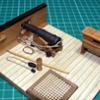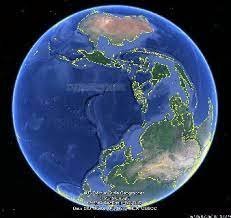-
Posts
5,924 -
Joined
-
Last visited
Content Type
Profiles
Forums
Gallery
Events
Everything posted by BANYAN
-
Great to see the update Keith, take as long as you like mate. Merry Christmas to you and your family Pat
-
Looking great Steven, that stand really suits. Happy Christmas Pat
- 508 replies
-
Ditto, happy Christmas to you and your family Glen cheers Pat
- 174 replies
-
- Waa Kaulua
- bottle
-
(and 1 more)
Tagged with:
-
Your model is looking great Ian; and if I may use a superlative in the most sincere way 'outstanding'. Have a great Christmas and looking forward to her progress in the new year. cheers Pat
- 536 replies
-
- Quadrireme
- radio
-
(and 1 more)
Tagged with:
-
This will make another fine display Greg; looking forward to seeing it. Happy Christmas Pat
- 233 replies
-
Hi HOF, great to find another member of the Endeavour club - and many thanks for the accolades, I hope my build lives up to your expectations. It looks like you have a very nicely faired hull, and the deck planking looks great. Looking forward to seeing her come along. Just holler across the ditch if you have any questions mate, I still have many of the photos I posted so just let me know if you need any, or need any clarifications on why I did anything, especially the rigging. cheers Pat
-
Good luck Greg, that will be a difficult pattern to mimic. Certainly looks effective. Merry Christmas Pat
- 233 replies
-
Easy for you to say Glen, me thinks this is more experience and good skills coming to the fore. You will really have to look outside-the-box to find a real challenge for your next hull build ... and BTW, the craft looks great in its setting - very nice work indeed. cheers Pat
- 174 replies
-
- Waa Kaulua
- bottle
-
(and 1 more)
Tagged with:
-

Stepping the mast with a plum bob...two questions.
BANYAN replied to HardeeHarHar's topic in Masting, rigging and sails
Hi all, the method I use is based on the 'square' idea but utilises a jig. I make the jig as a triangle with a flat base that sits on the deck. I then cut the leading edge to the correct angle have set that up with a protractor; the angle (or straightness of the trailing edge does not matter. I glue/tack a small slat on either side of the leading edge forming a channel within which the mast sits - but I also do not glue the mast in. This cradle of sorts holds the mast in the correct alignment while I place the major standing rigging that stabilises the mast. The jig is as thick, or slightly thicker, as the mast itself. I usually make this from scrap wood (preferable something stable such as MDF) but it does not have to be very large; typically, a base of 2-3", and about 4-6" high I find is more than enough, and it remains small enough to extract it though the gaps in the rigging - note that I have usually fitted the upper masts off the model before this. I tack-glue a bit of scrap material (usually plastic) to the base that has been shaped to conform with the side of the inside of the bulwarks, or other fittings keep the whole assembly centred on the centre-line and aligned correctly. This done of thin material and tacked only so that it can easily be removed/separated from the jig for its removal. I hope this all makes sense? I then level the model in my building base (if not done earlier) by placing small bubble levels on the deck and adjust as required. Once level, I secure the hull in the building base. This method allows me to have the mast at the correct rake and also minimizing the chances of it being moved too far to port or stbd. Just an idea for an alternate solution. -
Wow Glen, those sails came up a treat mate; very nice. cheers Pat
- 174 replies
-
- Waa Kaulua
- bottle
-
(and 1 more)
Tagged with:
-
Looks great despite its best efforts to thwart you Glen. Hopefully still enough room in the neck to get your masterpiece inserted? cheers Pat
- 174 replies
-
- Waa Kaulua
- bottle
-
(and 1 more)
Tagged with:
-
Ha, would I do that? You had me worried when I opened your latest update. Before reading the associated text, it was a case of - Woa, what's Glen doing with snake skins Thankfully only leaves/bark. Great idea for preserving them. Looking forward to seeing them in situ; they will really set it all off. cheers Pat
- 174 replies
-
- Waa Kaulua
- bottle
-
(and 1 more)
Tagged with:
-
Very tidy work John, she's looking great. Great to hear the proposed new project will probably go ahead. cheers Pat
-
Nice job on those braces Steven, they came up a treat - they look very symmetrical. cheers Pat
- 508 replies
-
Glen, are you sure you haven't confused this with another site? Just askin..... Pat
- 174 replies
-
- Waa Kaulua
- bottle
-
(and 1 more)
Tagged with:
-
That's always the way isn't it Glen? Probably natures way of ensuring we don't get to complacent I suppose Anyways perhaps worth another tot? Now where is that keg? cheers Pat
- 174 replies
-
- Waa Kaulua
- bottle
-
(and 1 more)
Tagged with:
-
Wow Glen, that is very nice work at any scale let alone at the eye-watering scale you are working with. I think that deserves a double 'tot'. cheers Pat
- 174 replies
-
- Waa Kaulua
- bottle
-
(and 1 more)
Tagged with:
-
I haven't commented on this build earlier Greg, but i have been lurking and watching this build come together. You have become a real whiz with PE; some really nice detail you're adding in this (re)build. cheers Pat
- 233 replies
-

HMCSS Victoria 1855 by BANYAN - 1:72
BANYAN replied to BANYAN's topic in - Build logs for subjects built 1851 - 1900
Oh you guys! You lot have it all wrong - it is Aus that is on the right side of the sphere; not strange at all See told ya: Why sit indoors, be cold and all rugged up to celebrate Christmas? The above picture from Keith A says it all (well except for a celebratory drink in hand). While I am on the subject, for years you guys have also got it all wrong WRT Santa's sleigh. It wasn't flown with reindeers, but rather with 'boomers' (yeah the sound they make when they bounce off the ground ); the only problem is they end up making for a lot more road maintenance BTW Keith, turkey on the Barbie is 'delicious' mmmm mmm. cheers Pat- 993 replies
-
- gun dispatch vessel
- victoria
-
(and 2 more)
Tagged with:
-
Very nice work Glen, really starting to come together now. I think the turned down leading rails also look the part - good choice. cheers Pat
- 174 replies
-
- Waa Kaulua
- bottle
-
(and 1 more)
Tagged with:
About us
Modelshipworld - Advancing Ship Modeling through Research
SSL Secured
Your security is important for us so this Website is SSL-Secured
NRG Mailing Address
Nautical Research Guild
237 South Lincoln Street
Westmont IL, 60559-1917
Model Ship World ® and the MSW logo are Registered Trademarks, and belong to the Nautical Research Guild (United States Patent and Trademark Office: No. 6,929,264 & No. 6,929,274, registered Dec. 20, 2022)
Helpful Links
About the NRG
If you enjoy building ship models that are historically accurate as well as beautiful, then The Nautical Research Guild (NRG) is just right for you.
The Guild is a non-profit educational organization whose mission is to “Advance Ship Modeling Through Research”. We provide support to our members in their efforts to raise the quality of their model ships.
The Nautical Research Guild has published our world-renowned quarterly magazine, The Nautical Research Journal, since 1955. The pages of the Journal are full of articles by accomplished ship modelers who show you how they create those exquisite details on their models, and by maritime historians who show you the correct details to build. The Journal is available in both print and digital editions. Go to the NRG web site (www.thenrg.org) to download a complimentary digital copy of the Journal. The NRG also publishes plan sets, books and compilations of back issues of the Journal and the former Ships in Scale and Model Ship Builder magazines.






